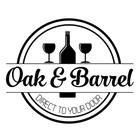WHAT IS SPARKLING WINE?
Sparkling wine is a wine which bubbles when poured into a glass. This fizziness which causes the wine to sparkle is what makes this category of wine unique and is the result of dissolved carbon dioxide in the wine – held under pressure in the bottle moving from a meta-stable state once the pressure is removed by uncorking. Champagne is best known as sparkling wine originates from the Champagne region of France.
HOW IS SPARKLING WINE MADE?

CHAMPAGNE METHOD
The wine is transferred into a bottle along with yeast and sugar. The yeast eats the sugar and expels alcohol, carbon dioxide and heat while mixing with the wine which makes it sparkle. After time the yeast runs out of sugar and dies off, which leaves you with a cloudy bottle of sparkling wine with dead yeast in it. Once all the yeast has accumulated together, the neck of the bottle is plunged into a cold brine solution which freezes the wine around the yeast and when the bottle is opened the plug of ice and yeast expels from the bottle.
The bottle is now a little emptier and replaced with the same amount of sugar . The amount of sugar is determined by what style of sparkling wine it will be - extra dry-Brut, Dry-Sec, Semi-sweet-Demi-sec and Sweet/Doux. The finished sparkling wine is corked and ready to be sold.
CHARMAT/TRANSFER METHOD
The wine is transferred into a vat or tank and sugar and yeast is added to produce bubbles. Once the yeast has done its job, the wine is transferred into bottles leaving the yeast behind in the vat or tank.
This is far easier and more cost effective but the result is usually a wine with less toasty flavours which the yeast imparts. The bubbles tend to be larger than when using the Champagne method and the bubbles are the main indicator of the quality of sparkling wines. This method is meant for fresher, fruitier types of sparkling wines.
CARBONATION METHOD
The bubbles are produced by adding CO2 and this approach produces the least expensive type of sparkling wines as there is no flavour from yeast and the bubbles are coarse.
ALL CHAMPAGNES ARE SPARKLING WINES, BUT NOT ALL SPARKLING WINES ARE CHAMPAGNE
CHAMPAGNE
Champagne is named after the region where it is grown, fermented and bottled: Champagne, France. The process in which Champagne is made is called Méthode Champenoise, (also known as “fermented in a bottle”). The grape juice is first fermented into alcohol and then bottled to trap CO2 gas which forms the trademark bubbles (the tirage stage of the process). Winemakers must then add sugar, yeast, and yeast nutrients, allowing time for carbonation to develop in the individual bottles before removing the dead yeast cells to reveal pure Champagne.
All grapes that are used in Champagne must be hand-picked and pressed in a covered environment. They may only be pressed twice, once to make the ultra-concentrated cuvée (which is high in sugar and acid) and the second time to make the taille (sugary, lower in acid, and higher in minerals and pigment).
PROSECCO
Prosecco is a sparkling wine made primarily in Veneto, Italy and is made with Prosecco (Glera) grapes. They are made using the Charmat Method.
MOSCATO
Moscato (pronounced mo-ska-toh) is a sweet Italian wine known for its fruity notes. Made from the Muscat grape, this white wine is typically thought of as a dessert wine with a hint of fizz.
Check out the huge variety of Sparkling Wines we have at Oak & Barrel!


